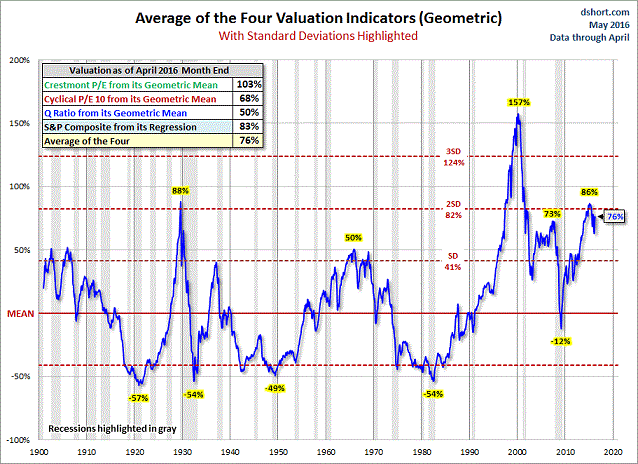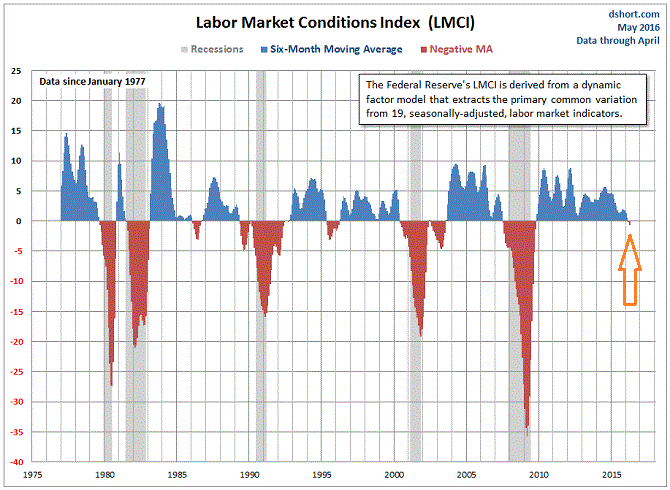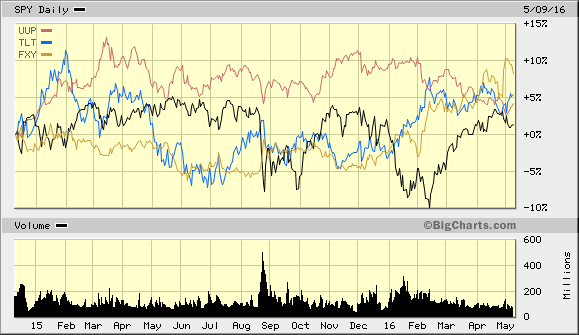Some analysts may dismiss 115 years of economic data. I do not. In particular, if one averages the results of four respected stock valuation methodologies, one finds that stocks are wildly expensive. Greater irrationality in stock price exuberance only existed during conditions prior to the Great Depression circa 1929 and the tech wreck of 2000.
Consider the chart below. Based on the analysis by Doug Short, the widely cited Vice President of Research at Advisor Perspectives, the U.S. stock market is overvalued by 76%. It is worth noting that on all three occasions when the aggregate average approached two standard deviations above a geometric mean – 1929, 1999, 2007 – U.S. stocks collapsed by 50% or more. In addition, current valuation extremes surpass those reached in 2007.

Investors should be mindful of the fact that Mr. Short does not typically offer “bearish” or “bullish” commentary. He usually provides investment and economic research, allowing others to draw their own conclusions. That said, he has served up bullet points on the high probability that market returns will be low over the next 7-10 years. Mr. Short has also mentioned that tactical asset allocation will be more important in the coming decade, as holding the S&P 500 for the next 7-10 years is likely to be “disappointing.”
Keep in mind, elevated valuations in and of themselves may not provide much insight with respect to reducing risk in one’s portfolio. Years of valuation extremes can persist when other factors are at play. (Think central bank interest rate and balance sheet shenanigans.) Nevertheless, an economy that shows signs of stagnation coupled with signs of “risk-off” positioning can break the back of a stock market bull, particularly when interest rate manipulating, balance sheet expanding central banks are only running on fumes.
I mentioned that the economy is stagnating and that signs of “risk-off” positioning are evident. Let me first address the economy. Corporations are not increasing their profits, as corporate earnings per share have declined for four consecutive quarters. Business revenue is even more abysmal. Companies have fallen back to 2012 levels with respect to revenue generation, and that does not even adjust for inflation.

Traditional retailers are struggling and some are disappearing (e.g., Wal-Mart (NYSE:WMT), J.C. Penney (NYSE:JCP), Sears (NASDAQ:SHLD), Macy’s (NYSE:M), Office Depot (NASDAQ:ODP), Walgreens (NASDAQ:WBA), Sports Authority, Sports Chalet--which announced in April that it was closing all its stores, Aeropostale (NYSE:ARO), etc.).
Oil and gas companies? Yikes. According to reports on a Deloitte study, one-third of oil corporations may go belly up in 2016. The study focused on some 175-plus companies with more than $150 billion in debt.
What about gross domestic product (GDP)? At a pace of 1% over the last six months, it is hardly expanding at all. Even the bright spot of job growth is deteriorating. Consider the Federal Reserve’s own Labor Market Condition’s Index (LMCI) which evaluates 19 unique indicators of labor market health. The LMCI peaked in April of 2014; its intermediate-moving average (6-months) peaked in August of 2014. (Note: S&P 500 earnings per share hit its all-time top in September of 2014, representing Q3 on 9/30/2014).

The 6-month moving average on the LMCI has not rolled into negative territory since the Great Recession (2007-2009). Before that, you’d need to look at the NASDAQ’s tech wreck and 2001 recession (2000-2002) for significant troubles in the well-being of the labor market.
Does this mean that a recession is imminent? No. But it sure as heck means that labor market conditions are weakening. With “job growth” having been the one supposed saving grace in a slow-growing economy that required near 0% interest policy for seven-plus years, it seems optimism for a turnaround prior to a sell-off in risky assets would be misplaced.
Of course, there are those that are keeping the faith with respect to stocks rallying well into the end of 2016 without a correction or bear. The thinking? As long as the economy muddles through, the Federal Reserve won’t be able to raise rates, and the dollar will move lower in the absence of tightening, and the lower dollar will help businesses increase their overseas sales and profitability. In other words, bad news will be good news for never-say-die hold-n-hopers.
Unfortunately, there are a number of problems with the muddle-through scenario. Problemo numero uno? Household debt exceeds disposable personal income. Granted, Americans have been spending more than their take-home pay after taxes since 2001. Yet the modest deleveraging that occurred after the Great Recession has passed us by. Sooner or later, as families continue to accumulate increasing amounts of debt to spend more than they clear via disposable personal income, a retrenchment period comes to pass. Either households will be challenged in accessing credit (involuntary deleveraging) or they themselves will choose to borrow less in spite of ultra-low rates (voluntary deleveraging).

Economic data on consumption shows that the consumer has been softening. Bring disposable personal income into the picture, and the consumer is likely to weaken even more.
The second problem for the muddle-through economy dream is the reality that “risk off” investing has been outperforming the U.S. market for 18 months already. 18 months. Consider the fact that three of the best performing assets in the 2008 systemic financial meltdown were the yen, the dollar and long-maturity Treasury bonds. You could have invested in each via CurencyShares Yen Trust (NYSE:FXY), PowerShares Dollar Bullish (NYSE:UUP) and iShares 20+ Treasury Bond (NYSE:TLT). Over the last year-and-a-half, all three of these “risk-off” assets have beaten the SPDR S&P 500 Trust (NYSE:SPY).

In sum, stock valuations are exorbitant, business sales are soft, consumption is strained, the labor market is weakening and “risk-off” assets are outperforming. Add it all up? There is limited upside reward for the risk one takes by remaining overexposed to equities and higher-yielding vehicles.
If you normally leave 65%-70% in a diversified basket of stock (e.g., large-cap, mid-cap, small-cap, foreign, emerging, etc.), downshift to 45%-50% high quality larger-caps only. If you typically allot 30%-35% to diversified income (e.g., investment grade, cross-over corporate, high-yield, convertible, foreign, etc.), dial it back to 20%-25% investment grade only. The 25%/30%/35% that you raise in cash or cash equivalents by selling riskier assets at relatively higher prices will minimize portfolio volatility. More importantly, it will be the “dry powder” you require to buy “risk-on” assets at more attractive prices in the future.
Disclosure: Gary Gordon, MS, CFP is the president of Pacific Park Financial, Inc., a Registered Investment Adviser with the SEC. Gary Gordon, Pacific Park Financial, Inc, and/or its clients may hold positions in the ETFs, mutual funds, and/or any investment asset mentioned above. The commentary does not constitute individualized investment advice. The opinions offered herein are not personalized recommendations to buy, sell or hold securities. At times, issuers of exchange-traded products compensate Pacific Park Financial, Inc. or its subsidiaries for advertising at the ETF Expert web site. ETF Expert content is created independently of any advertising relationships.
